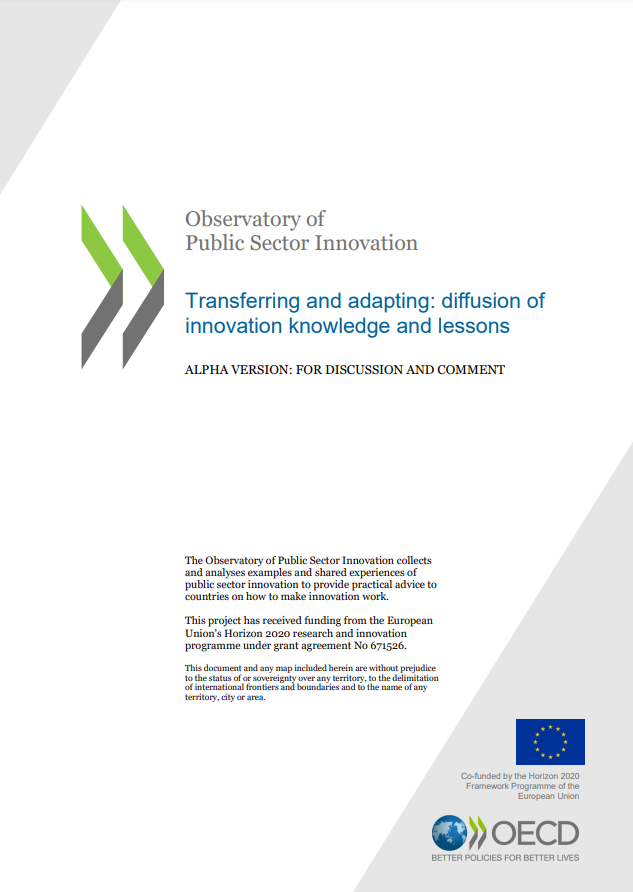Transferring and Adapting: Diffusion of innovation knowledge and lessons (Innovation Lifecycle 6/6)

Overview
Public sector organisations are dealing with large and varied changesin their operating environment. Many traditional practices are no longer delivering the results that are expected or needed. There are pressures to perform, to meet changing expectations of government and to build trust that government can meet the needs of citizens. There is a need to lift productivity and effectiveness, and to work with citizens in new and more inclusive ways.
These pressures mean that public sector organisations will need to look to innovative approaches in order to meet the demands placed upon them. Organisations need to integrate innovation as part of their core activities. This means that they need to systematically put in place processes for the identification of problems, the generation of ideas, the formalisation of business cases, implementation of promising projects, evaluation and the diffusion of results. This process has been identified in the Innovation Lifecycle.
The importance of diffusion
The last phase of the innovation lifecycle is diffusing lessons. However, anyone who has worked on an innovation project knows that this phase is not the end. Depending on the outcomes of the project, many subsequent trajectories are possible. In some cases, the end is also a beginning. Diffusion of lessons need not only happen at the end of a project as much of the learning that occurs in other stages is perhaps just as useful as the final results.
Diffusion should be considered as a practice designed into all phases of the innovation lifecycle in order to capture all kinds of learning—including the deeper tacit knowledge that informs future projects within and across contexts.
The diffusion of lessons phase must be especially considerate of adjacent phases: the evaluation phase helps establish the knowledge and practices that are relevant to share; and, the identifying problems phase establishes the demand of knowledge and practices for innovation projects. The first lifecycle report, identifying problems, focused heavily on how individuals, teams, and organisations learn and since those mechanisms and structures are relevant to understand the “demand-side” of innovation knowledge and practices, this report draws heavily from it.
Learning is a fundamental part of the overall innovation process. Innovation without learning is luck, and governments cannot rely on luck or chance to answer citizen expectations. Individuals, teams, and organisations stand to gain a lot learning from others what is working, what is not working, what might be possible, or what might be potential problems. Of course, direct adoption, particularly of solutions, from other contexts and around complex problems, is likely to lead to surprises and unintended consequences. The key is transfer, not replication, for most types of innovation.

Transferring and Adapting: Diffusion of innovation knowledge and lessons
Published on 2 July 2018.
